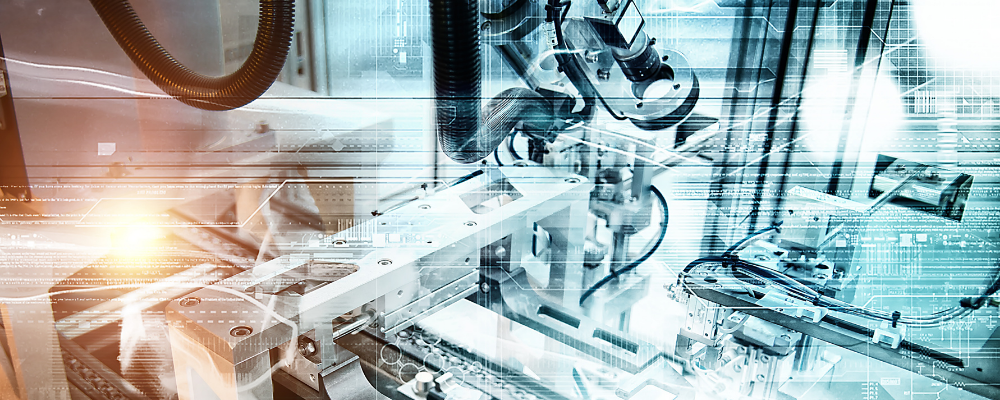Drop off your CV
We'd love to hear from you. Send us your CV and one of our specialist consultants will be in touch.

Within
the manufacturing industry, the term ‘automation’ has, to an extent, become
synonymous with fear. This stems from estimations that thousands of jobs in
Australia will be decimated by 2030, clearing the way for a new era of advanced
technology which is cost effective and drives greater efficiencies. It is
estimated that by 2030, 800 million jobs could be displaced globally, so
understandably, and depending on the sources you read, that fear feels
completely justifiable.
But what
if automation equals opportunity, to a scale that we can’t completely foresee
just yet? (We are still 11 years from 2030, and 11 years ago jobs like Social
Media Manager were barely a concept). Technological advances are no longer just
a possibility, they are a reality and so too is the fact that the workforce
must adapt to meet these advances. As we have seen time and again, rather than
force devastation on existing workers, this adaption has delivered greater
opportunities for developing and upskilling workforces.
According
to the Australian Department of Innovation, Industry and Science, Industry 4.0
– the fourth industrial revolution, fuelled by advanced automation, robotics,
machine learning and artificial intelligence, will make the country’s economy
soar, which could be worth $2.2 trillion – and what’s good for the economy is
generally good for its people.
Automation
and manufacturing jobs
It’s hard
to ignore the rise and strength of automation in the manufacturing sector: last
month supermarket powerhouse Coles announced its plans to build two automated
distribution centres to compete with competitor Woolworths’ advances in machine
technology. This was met with a mixture of excitement – lower supply
chain costs and enhanced business competitiveness cited as contributing factors
– and worry. Coles confirmed that job losses in existing centres were likely,
but the fact remains that these losses will give rise to roles which are
intrinsically linked to machine technology: automation / robotics engineers
etc.
The
question that industry professionals, and educators before them, should be
asking is how do we develop adequate training and education to upskill existing
and future workforces so that job losses are minimal or non-existent? We know
it’s doable, every revolution that’s come before has proven that, and more than
that, advances in technology have historically created considerably more jobs
than they have quashed – so the future, tied up in a pretty artificially
intelligent bow, doesn’t seem so dire.
Collaborative
robots
Organisations
have already begun embracing robotics as an addition to workforces, rather than
a replacement. These collaborative robots (or ‘cobots’) are revolutionising
efficiency by performing the repetitive, often mundane tasks which people often
spend too much time on. Last year, Wired reported that a robot painter in
California had increased human productivity fourfold and not a single job in
the business was lost, showing that not only is the co-existence of man and
machine in the workplace possible, but that it can also improve the quality of
the work people do.
Automation
recruitment in the future
Much
research has been conducted into what a future that wholly embraces automation
would look like. Some of this is uncertain, as change often is, but a huge
amount is positive. Management Consultancy, McKinsey Global shared a fairly optimistic
outlook in its comprehensive review of automation globally and how it will
impact jobs. It concluded that in many ways automation technology will champion
economic growth and rise in productivity. With a growing economy, there is
greater likelihood of job creation than destruction.
That’s
not to argue that there won’t be some job losses and a considerable change in
how we work and what we do: that is inevitable, but if we begin a process of
adapting, educating and embracing opportunity, we could massively support in
upskilling and retaining talent, as well as create opportunities for new
skilled hires.
Whilst
there is likely to be a shortage in skilled talent in automation in the long
term as companies begin investing in training and development, I am actually
seeing a lot of companies embrace technological changes in this sector and
adapt their recruitment policies to the changing landscape.
As a result, I am currently working on a number of specialist roles in this area, which include automation engineers, and am confident that this is the start of increased demand for collaborative working between humans and robots.
Sources:
https://www.wired.com/story/the-tale-of-the-painting-robot-that-didnt-steal-anyones-job/
https://www.industry.gov.au/funding-and-incentives/manufacturing/industry-40